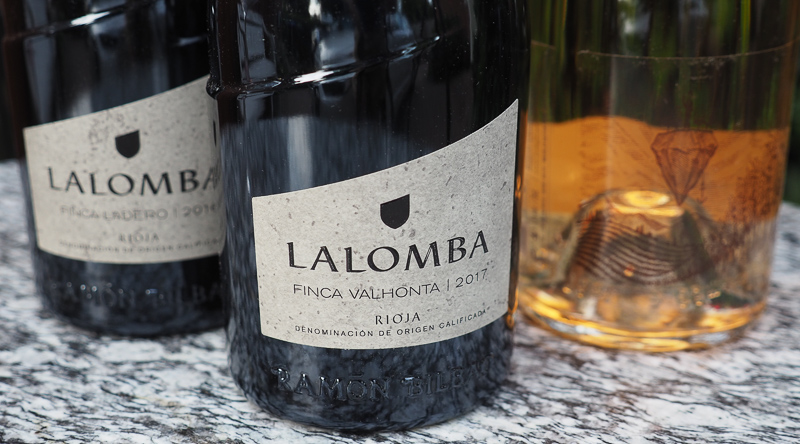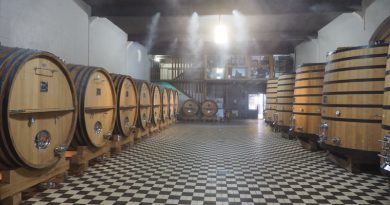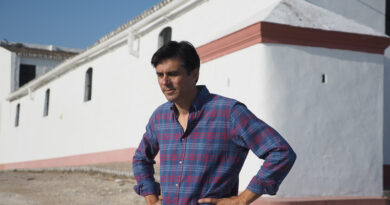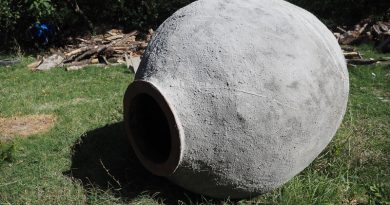Lalomba: an exciting new project from Rioja
[Original article from October 2020, updated March 2022]
Lalomba is an exciting new project from Ramón Bilbao, one of Spain’s most significant producers with wineries in four regions. Often associated with large-ish production wines that are high quality but widely available, this new venture is quite niche. I caught up with Rosana Lisa, winemaker and technical director, and her colleague Alberto Saldon, to have a look at the first releases.
Lisa, who for the last eight years has been in charge of Ramón Bilbao’s research and development, says that this is not something they have rushed into. ‘We are not in a hurry,’ she says. It is the vineyards they own – which she describes as a special heritage – that has led them to press ahead with Lalomba.
Spain has a tremendous diversity of vineyards, she points out. There’s ‘green Spain’ on the Atlantic coast. There’s ‘Mediterranean Spain’ in the south and east. And then there is dry, ‘mountainous Spain’, with two plateaus above 800 metres and a continental climate. ‘It is the second most mountainous country in Europe, after Switzerland,’ says Lisa. Rioja is a particularly interesting (and also diverse) wine region, with 2000 growing degree days (GDDs) in the west and 2700 GDDs in the east. Ramón Bilbao has 205 hectares of vineyards here.
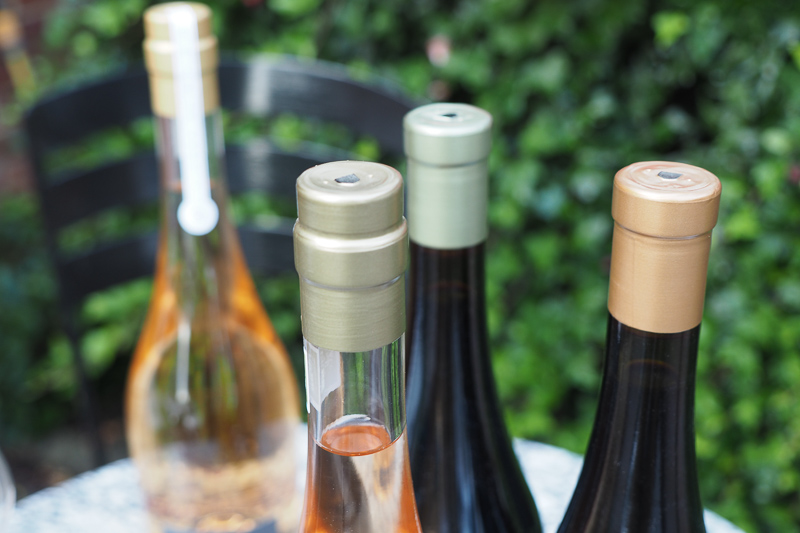
Ramón Bilbao have used a lot of tools to study their vineyards. They’ve used precision viticulture (flying drones and also getting images from satellites), they have weather stations in all the vineyards for real time monitoring, they have studied soils, and for the last five years they have been investigating the microbial populations too.
This helped them decide which the most interesting vineyards were to use for Lalomba. ‘This is our DNA,’ says Lisa. ‘We have come from the research part of the company. All the information from this research is shared with all the wineries in the group.’
They are focusing on three terroirs. The first is Finca Lalinde, in Rioja Baja, close to the river. These are 1976 plantings, and they start at over 500 m in altitude. The climate is moderate Atlantic with a continental influence: the wind from Aragon helps create fantastic sanitary conditions. They have 5.4 ha of Garnacha and Viura here, to make their rosé.
The second is Valhonta, which is 100 km from Rioja Oriental, close to the Sierra de Catalina. The 2.8 hectares of vines are grown at 650 m, which is close to the limit of growing grapes. This site has a huge diversity of microbial life with over 600 communities of bacteria and fungi living in the soil. Planted in 2000 with bush vines, Lisa describes this site as ‘super balanced.’ The Atlantic influence from the Basque country makes this nice and cool, and the main problem is spring frosts.
The third is Ladero in Rioja Oriental. Vines were planted at an altitude of 720 m in 1989, and the varieties are Tempranillo and Garnacha. The six hectare vineyard produces very low yields but excellent quality.
What sort of work do they do in the vineyards? Viticulture is sustainable, preferring biological treatments such as sexual confusion (against grape vine moths) and Trichoderma (as a pruning treatment to stop trunk diseases). They have used Simonit and Sirch to help them with their pruning, again, to avoid trunk disease.
They have done a lot of research on powdery and downy mildew, using predictive models to avoid chemical treatments when they aren’t needed. This has led to a reduction of chemical use by 30%, which for their company means 10 000 litres less of chemical products in one season.
One interesting piece of research involves using biofilters, which are sprayed on the grapes and leaves. These include algae (which filter out radiation in the 310-340 nm spectrum), uric acid (270-290 nm) and ascorbic acid (<260 nm). The uric acid results in 40% more polyphenols in the grapes, while the ascorbic acid results in more colour.
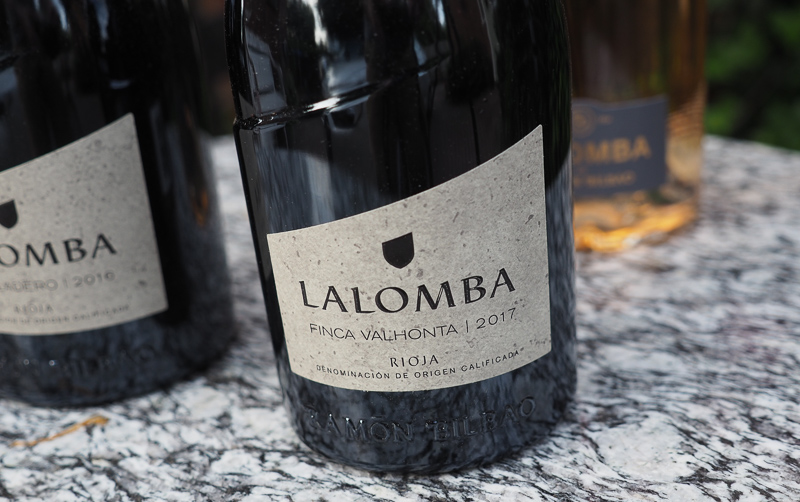
Experimentation continues to the winery. After some research, they decided that concrete was the best material to used for fermentation. They studied a few different options. Stainless steel doesn’t give any flavours and is easy to clean, and it’s easy to control fermentation temperature. Oak is a porous material so it is positive for colour stability and the development of the wine, but it gives tertiary aromas. Managing temperature is not complicated. Concrete is a blend of the two: it gives no flavour, but it is porous, which leads to better colour stability. The cleaning process is complicated, though: you can’t use high temperatures. But concrete has high thermal inertia and keeps the temperature very well.
Once they decided concrete was good, they studied different kinds and also the different lining options (epoxy-lined versus raw; Italian [Nico Velo] versus Burgundian [Nomblot]). They did this research with the University of Vallodolid. Using concrete of the same composition and width as the tanks, they investigated oxygen transmission with raw concrete, epoxy-lined concrete, and concrete covered in tartrates. Raw is the same as a barrel, and epoxy is no transmission at all. Tatrate lining is about half that of the barrel.
In the end they decided on Italy because of the shape, and to go for unlined. They also did a lot of work on choosing the right barrels. They are using French and Hungarian oak, and they are also showing a preference for Quercus petrea (poor soils so oak with more aroma complexity) over Quercus robus (richer soils makes oak with more powerful flavour impact). They use different sized barrels (225 and 500 litres) and then finish off ageing in concrete.
One of the wines in this tasting was a result of the experiments they’ve done: the Pure Concrete 2017 is a Garnacha. ‘This is a huge learning exercise,’ says Saldon. It’s still in concrete, after having done fermentation and malolactic in one tank, and then being transferred to another for ageing.
THE WINES
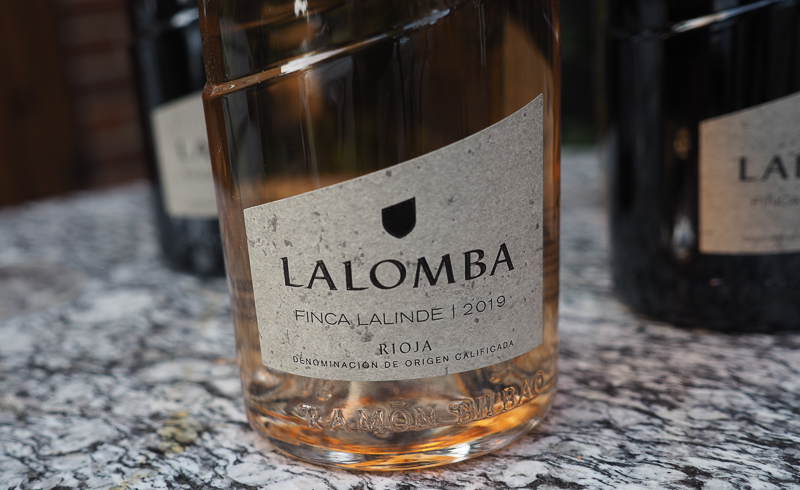
Notes are from October 2020 and March 2022 (indicated by each)
The first wine to come from Lalomba was the rosé, and they are now in the seventh vintage of this. It comes from five villages and they make it in a gastronomic style.
Lalomba de Ramon Bilbao Rosé 2020 Rioja, Spain
90% Garnacha, 10% Viura. This is taut and compact with a nice mineral citrus core as well as some pepper hints, and a touch of red cherry. It’s refreshing, restrained and gastronomic with good acidity and a fine spiciness. This is really good. 93/100 (03/22)
Lalomba de Ramon Bilbao Rosé 2018 Rioja, Spain
13% alcohol. This is powerful and spicy with lovely vivid pear, lemon and dried herbs, with a touch of fennel. It’s a concentrated, gastronomic rose with a bit of structure and nice purity. Very stylish and with real finesse, showing some mandarin detail and more of those fine spicy notes. 91/100 (10/20)
Lalomba Finca Lalinde Rosé 2019 Rioja, Spain
13% alcohol. This is complex and vivid, with a sweet citrus core and notes of spice, pepper and fine herbs as well as a touch of cranberry. This has lovely precision with a lovely balance between the mandarin and lemon fruit, the notes of fennel and fine herbs, and some juicy acidity. It’s a very textural wine, and there’s some tropical detail with a tapering, finely spiced finish. Such a beautiful rosé with amazing detail and precision. 94/100 (10/20)
The new wine is the Lalinde rosé Barrel Aged:
Lalomba de Ramon Bilbao Rosé Barrel Aged 2018 Rioja, Spain
90% Garnacha, 10% Viura. Concentrated and focused, with the wood adding a spicy, savoury, slightly nutty edge to the citrus, pear and red cherry fruit. This is complex and intriguing with a lovely savoury twist to the fruit. Has potential for further development. 94/100 (03/22)
Valhonta is fermented in concrete with delestage (removing the liquid and then putting it back over the skins to get high quality tannin extraction). It does malolactic in 500 litre barrels and stays there for 14 months, before going back to concrete for 8 months.
Lalomba Finca Valhonta 2017 Rioja, Spain
14.5% alcohol. This is intensely aromatic with some sweet, floral black cherry and blackberry, as well as some spicy oak and a hint of tar. It’s very fresh, focused and floral. The palate is concentrated and taut, with good acidity and freshness, showing lovely black cherries, blackberry and spice. It’s a little technological and shows a bit of oak and polish, but there’s lovely freshness to this fruit: very impressive with good structure and a bit of crunch on the finish, which makes me think this will be a good long-term ager. 94/100 (10/20)
Lalomba Finca Valhonta 2017 Rioja, Spain (revisited 18 months later)
14.5% alcohol. Aromatic and nicely concentrated, this is quite serious with lovely intense black cherry and blackberry fruit, with hints of tar, spice and dried herbs. It’s a rich wine, but a fresh one, and the emphasis is on the fruit. Lovely depth here with great concentration and balance. 94/100 (03/22)
Lalomba Finca Valhonta 2019 Rioja, Spain (sample from a French barrel)
This is supple and expressive, with some spicy, vanillin oak adding a sheen to the supple black cherry and blackberry fruit. It’s fruit-driven and quite elegant, with supple fruit and a lovely purity, with some oak in the mix. Youthful, quite balanced and easy-going, but with a bit of structure. Everything is in balance so I reckon this has a good future ahead of it, especially when the oak settles down a bit. I think it will put on weight, too. 94/100 (03/22)
A new wine, not released yet, is the Lalomba Pure Concrete 2017. As mentioned earlier, this is still in concrete, and it’s a pure Garnacha with a small percentage of stems. ‘This is a porous material [unlined tooth-shaped Nico Velo tanks from Italy] and we can see the evolution of the primary character,’ says Lisa.
Lalomba Pure Concrete 2017 Sierra de Yerga, Rioja, Spain
14% alcohol. Really vivid in colour, this is a wall of sweet, pure berry fruits. It’s juicy and pure with lovely primary fruit, showing raspberry, cherry and plum, with a twist of redcurrant. There’s some crunchy, grainy tannin here, but the emphasis is on the bright, silky, joyful fruit. It’s a very interesting expression of Garnacha and I really like it. Where does it go from here? I have no idea. 93/100 (03/22)
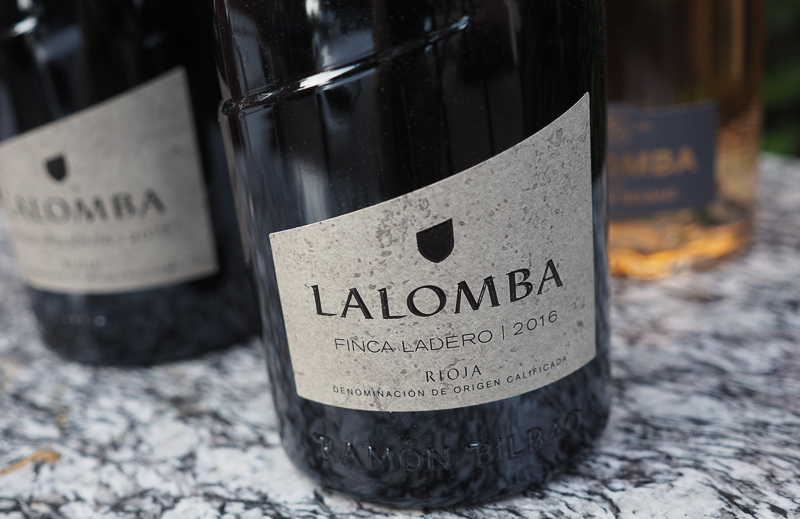
Ladero is a different style of wine, reflecting the vineyard, which is high-altitude. It results in a more classic style. Fermented in concrete and then it spends 16 months in 225 litre barrels, before a further 22 months in concrete. The tannins in this wine mean that it needs more oxygen.
Lalomba Finca Ladero 2016 Rioja, Spain
14.5% alcohol. Sleek, floral and a bit spicy on the nose, with lovely harmony. There are some floral notes alongside the spicy detail and the bright black cherry and blackberry fruit. The palate shows great concentration, with good structure to the grainy, dense, black cherry, blackberry and raspberry fruit. Amazing concentration, with a touch of oak in the background, and nice brightness. Needs time to show its best: it has polish and sheen that aren’t necessary, but the intensely concentrated, focused fruit shows immense potential. It’s a Rioja first growth. 95/100 (10/20)
Lalomba Finca Ladero 2016 Rioja, Spain (revisited 18 months later)
14.5% alcohol. Complex, broad and dense with some spicy oak complexity supporting bold, rich blackberry and black cherry fruit. It’s a compact wine, but there’s richness here. Shows blackcurrant and blackberry freshess with a fine hint of green, but also some spicy structure. A wine that has some aspects of classic ageworthy Rioja, combined with a more fruit-driven style. I think it will evolve in the way of the classic Riojas of the past, but in a very refined way: it speaks of its place, and the traditions of this place, but done in a more considered way. Give this plenty of time. 95/100 (03/22)
Find these wines with wine-searcher.com

